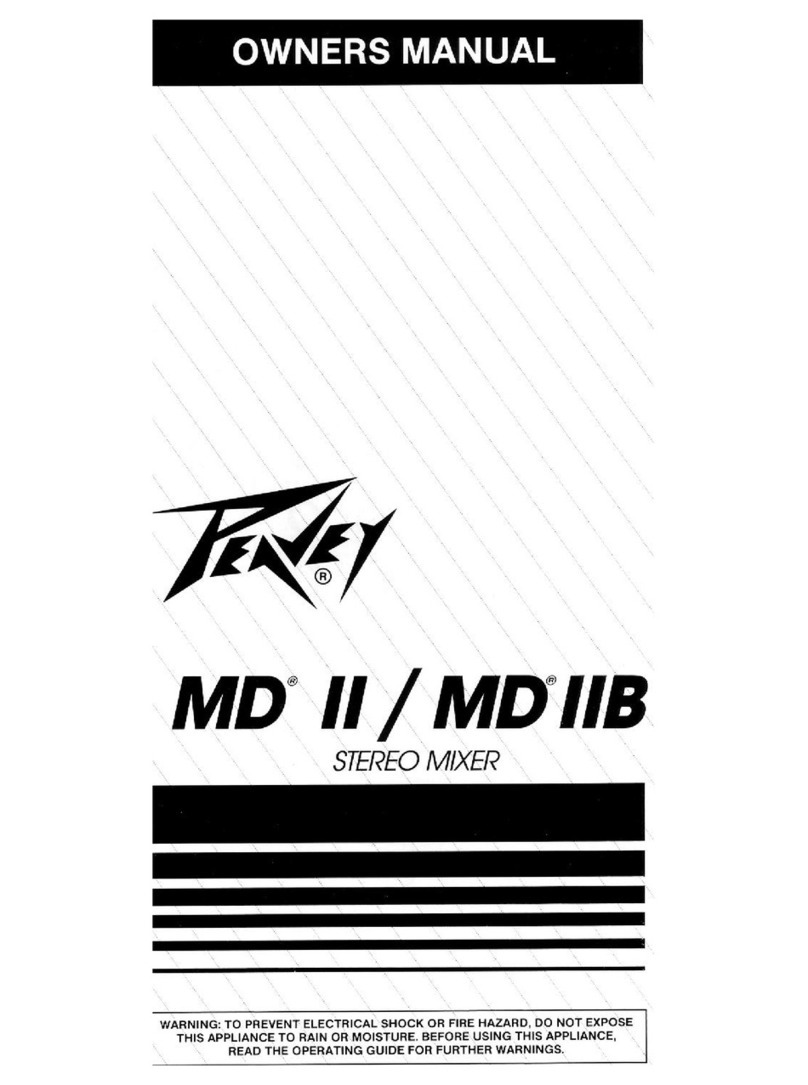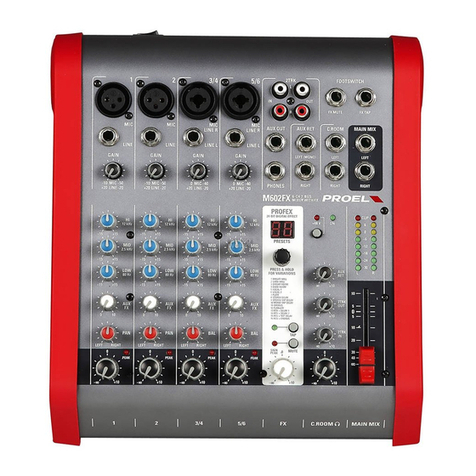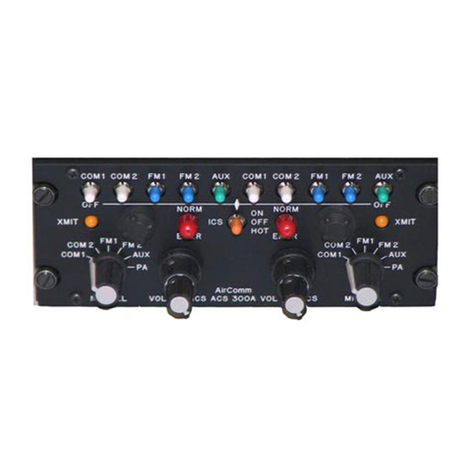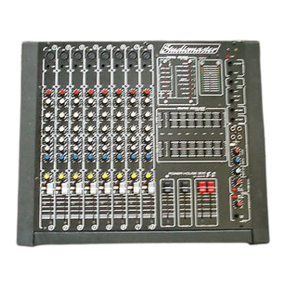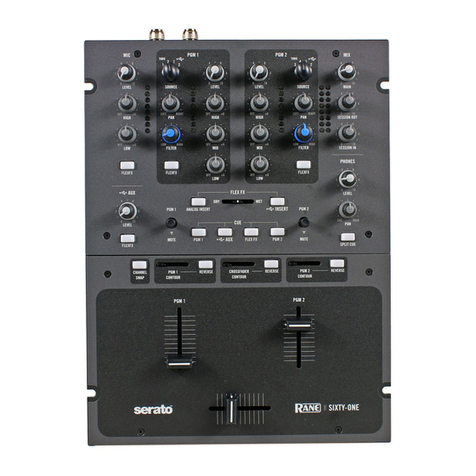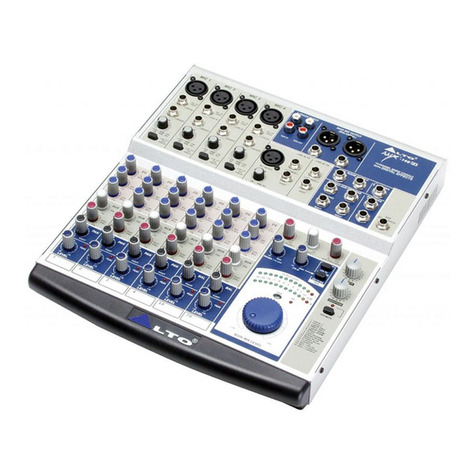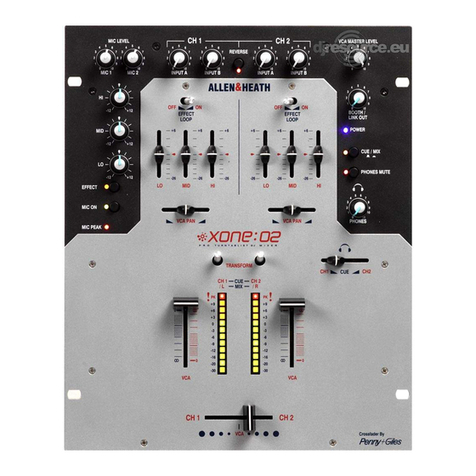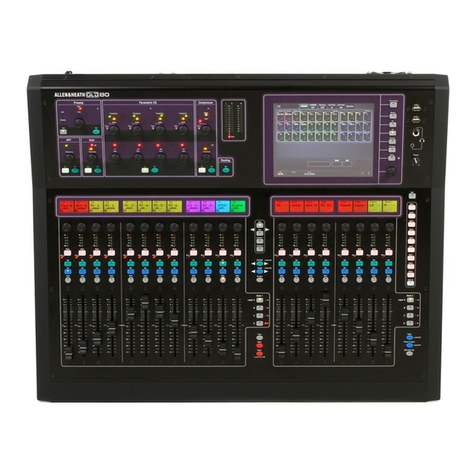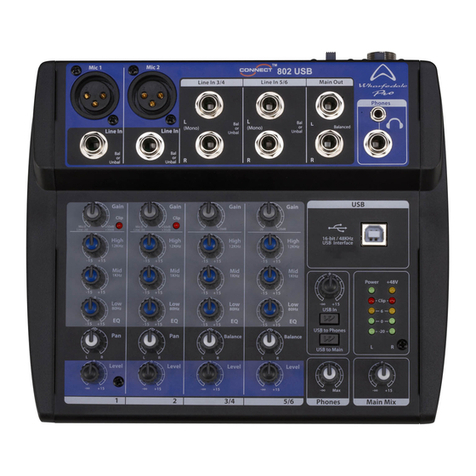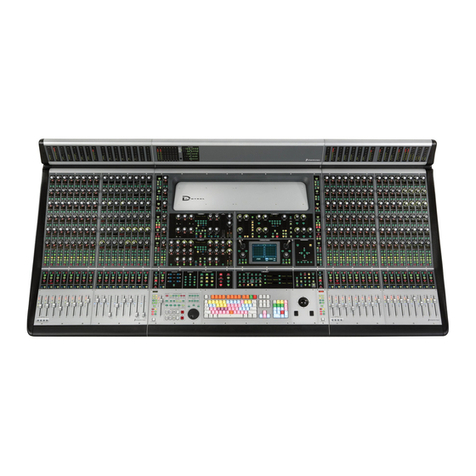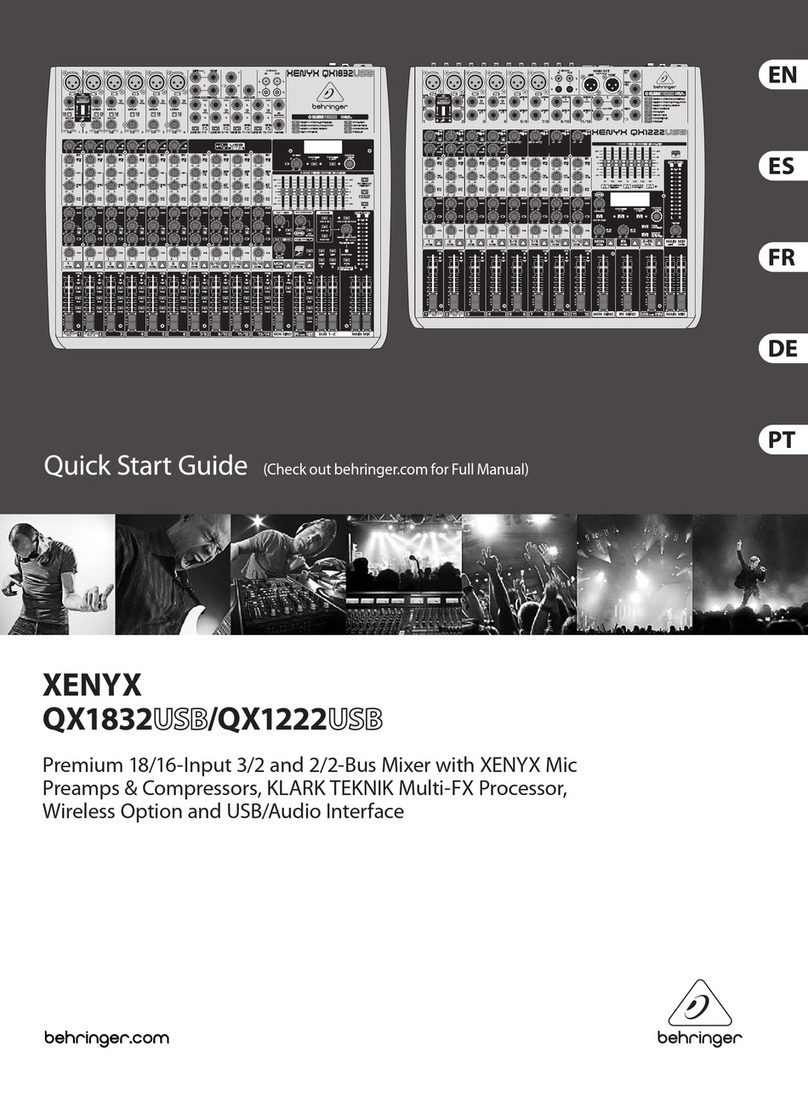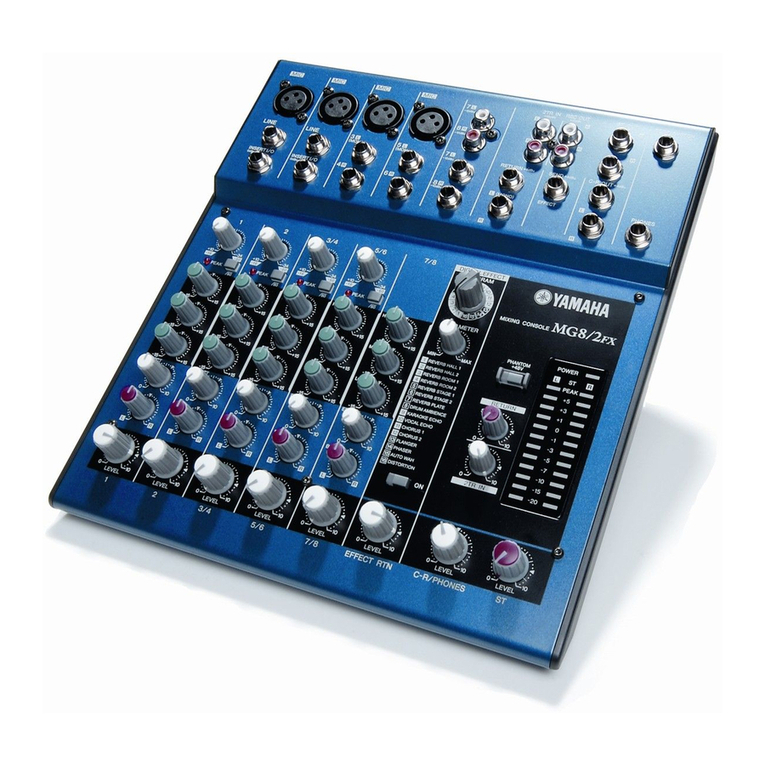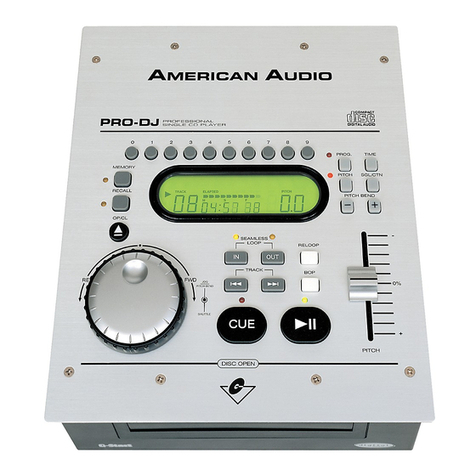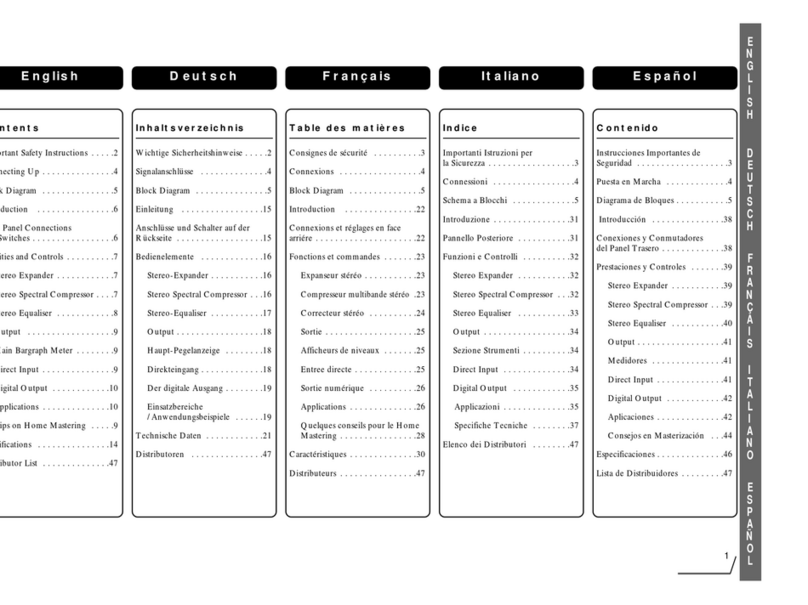Konica Minolta CS-3 User manual

No. 26-2, Nishishinjuku 1-chome, Shinjuku-ku, Tokyo 163-0512, Japan

Table of Contents
Foreword ...............................................................1
About this Manual.................................................3
Ch.1 Safety Precautions & Warnings ................7
Ch.2 Operation ..................................................19
Screen Flowchart ........................................................................20
Start up........................................................................................23
Shut-Down (Power OFF).............................................................24
Using the Input Panel..................................................................25
Ch.3 Sequence of Examination........................27
Before Examination.....................................................................28
Selection of Operator ..................................................................31
Patient Data Input (Input from CS-3)...........................................31
Patient Data Input (Search from Data Base)...............................32
Checking Patient Data ................................................................33
Initialization of Examination.........................................................33
Examination Body Part/Parameter Selection..............................34
Reserving Patient Data ...............................................................36
Exposure [Single-Image Format] Upright Position Reader.........................36
Exposure [Single-Image Format] Cassette Reader, Bar Code Registration.......38
Exposure [Single-Image Format] Cassette Reader, Screen Menu Selection .....39
Exposure [Multiple-Image Format] Upright Position Reader.......................41
Exposure [Multiple-Image Format] Cassette Reader, Bar Code Registration ......42
Exposure [Multiple-Image Format] Cassette Reader, Screen Menu Selection .....44
Image Output [Single-Image Format] Output per Order..........................45
Image Output [Single-Image Format] Batch Mode Output of all Orders ......46
Image Output [Multiple-Image Format] Output per Order........................47
Image Output [Multiple-Image Format] Batch Mode Output of all Orders .....48
Image Erasing.............................................................................49
Image Substitution ......................................................................51
Print Format ................................................................................52
Examination Suspension.............................................................58
Examination Termination ............................................................60
Image Reference after Examination (Output Again) ...................61
Image Sharing.............................................................................62
Overlay .......................................................................................64
Allocating Maker, Stamp or Grid/Scale.....................................64
Allocating the Annotations........................................................66
Ch.4 Description of Screens ............................77
Examination Search Screen........................................................78
(When the examination search screen has been set as the initial screen)
Examination List Screen .............................................................79
(When the examination search screen has been set as the initial screen)
Examination Check Screen [Single-Image Screen] ....................81
Examination Check Screen [Multiple-Image Screen]..................85
Examination List Screen .............................................................90
(When the examination list screen has been set as the initial screen)
Patient Data Input/Search Screen...............................................92
(When the examination list screen has been set as the initial screen)
Search Result Screen .................................................................94
Patient Data Amendment Screen................................................95
Extraction Parameter Screen......................................................96
Body Part/Parameter Selection Screen ......................................98
Detailed Data Setting Screen (Acquisition)...............................101
Detailed Data Setting Screen (Image Processing)....................103
Processing Menu Selection Screen ..........................................105
ROI Adjustment Screen ............................................................106
Rotation/Flipping Selection Screen...........................................107
Parameter Adjustment Screen..................................................108
Enhancement Type (E-processing) Selection Screen ..............110
Enhancement Type (F-processing) Selection Screen...............110
Detailed Data Setting Screen (Print Format).............................111
Film Size Selection Screen .......................................................115
Masking Size Adjustment Screen .............................................116
Detailed Data Setting Screen (Overlay)....................................118
Marker 1 Selection Screen........................................................120
Marker 2 Selection Screen........................................................120
Stamp Selection Screen............................................................121
Scale/Grid Selection Screen .....................................................122
Annotation Setup Screen ..........................................................123
Additional Information Screen...................................................126
System Menu Screen................................................................128
Device Status Screen................................................................129
Reader Status Check Screen....................................................131
JM Status Check Screen...........................................................132
Host Status Check Screen........................................................134
Printer Status Check Screen.....................................................135
RIS Status Check Screen .........................................................136
Operator Selection Screen........................................................138
Examination History Screen......................................................139
Console Select Screen..............................................................141
Image Reference Screen ..........................................................142
Output Setting Screen...............................................................144
Reject Reasons Screen ............................................................145
Ch.5 Operator Security Mode.........................147
User Name & Access Right.......................................................148
Log In ........................................................................................149
Log Off ......................................................................................149
Ch.6 Troubleshooting .....................................151
Trouble of JM ............................................................................152
Error List....................................................................................154
Ch.7 Optional Functions.................................171
Overview of the Optional Functions ..........................................172
Image Stitching Process ...........................................................173
Ch.8 Operating the Optional Equipments.....183
Single Bar code Reader............................................................184
Multiple Bar code Reader..........................................................187
Ch.9 Care & Maintenance ...............................189
Care & Maintenance .................................................................190
Care & Maintenance Schedule .................................................191
Specifications ...................................................193
Index .................................................................197
Mammo Use is not approved in the United States of America.

REGIUS Console CS-3 OPERATION MANUAL Ver. 1.10 2005.2
< 1 >
Thank you for purchasing "Regius Console CS-3"(hereinforth referred to as CS-3).
The CS-3 is a console (controller) that can be commonly shared and utilized by REGIUS
Product Series. With the CS-3, it becomes possible to integrally control the examination
flow including the registration of patient information / examination information as well as
the overall verification of the final radiographic image, and thus a comfortable environment
with an efficient work flow can be secured.
In this manual, safety precautions and operational procedures are described to allow the
users of the CS-3 to be fully familiarized with the potential of the CS-3. The manual should
be at all times be kept in a readily accessible place for easy reference. Should you loose
this manual, please contact your Service Representative for the new one.
Foreword

Foreword
< 2 >
REGIUS Console CS-3 OPERATION MANUAL Ver. 1.10 2005.2
Features
1. Two types of cassette registration method are available.
Depending on the operational environment or device layout, you can select from 2 types of
cassette registration method, i.e. "Registration with a bar code reader (at the time of expo-
sure)" and "Manual registration using a screen menu (at the time of cassette reading)".
2. Capable of controlling multiple readers.
Various reader devices for upright studies and cassette reading can be simultaneously con-
trolled by a single CS-3. This enables efficient flow of image verification from either reader
device without disturbing the exposure workflow.
3. Multiple Reader Input
Even with multiple cassette readers (REGIUS MODEL 170/190), the image read by any reader
in the system will be displayed on the CS-3 by which the objective cassette was registered.
This feature realizes highly reliable image identification as well as efficient use of readers.
4. Real Time Display
The image read by each reader will be displayed in real time in synchronization with the
reader operation. Therefore image verification is instantaneous.
5. ID Registration
In the case that patient registration is made at each X-ray room, the operator can search the
patient information or examination information via "Examination Search Screen". On the oth-
er hand, when the facility has a separate reception, the operator can display and browse the
registered Examination Information and Patient Information using "Examination List" screen.
In this case, use of an ID Registration System will be necessary.
< Cautions >
(1) Unauthorized reproduction of this manual in whole or in part is prohibited.
(2) The content of this manual is subject to change without prior notice.
(3) Should any discrepancies, errors or omissions be discovered, KONICA MINOLTA should be con-
tacted.
(4) Notwithstanding Item (3) above, KONICA MINOLTA shall accept no responsibility for any claims
made against loss or loss of profits arising from use of the product.
Trademarks
- "Microsoft" and "Windows" are trademarks or registered trademarks of Microsoft Corporation
(America) valid in America and other countries.
- "Windows 2000" is the abbreviation of "Microsoft / Windows 2000 Professional Operating System.
- Other company or product names used in this manual are trademarks or registered trademarks.
The indications ””, ”” and ”TM” shall be omitted henceforth.

REGIUS Console CS-3 OPERATION MANUAL Ver. 1.10 2005.2
< 3 >
About
this Manual Be sure to read this chapter before using this
manual.

About this Manual
< 4 >
REGIUS Console CS-3 OPERATION MANUAL Ver. 1.10 2005.2
Chapter1 Safety Precautions & Warnings
When using the REGIUS Console CS-3, the cautions detailed in
this chapter must be strictly followed in order to correctly use the
device.
Chapter2 Operation
The operation of CS-3 is described in this chapter.
Chapter3 Sequence of Examination
This chapter describes the sequence of examination using CS-3.
Chapter4 Description of Screens
This chapter describes each of the CS-3 screens.
Chapter5 Troubleshooting
This chapter describes typical methods of trouble shooting and
the error message list displayed on CS-3.
Chapter6 Optional Functions
The operation of optional functions available for CS-3 is described
in this chapter.
Chapter7 Operation of Optional Equipment
This chapter describes how to operate the optional equipments
for the CS-3.
Chapter8 Care & Maintenance
This chapter details the procedure for care and maintenance of
the CS-3.
Specification This chapter details the specification of the CS-3.
Index The index describes special terminology used in the CS-3 User's
Manual.
Structure of this manual
This manual consists of the chapters listed below.
How to use this manual
Notes on Device Identification
Upright/Cassette in this manual denote Upright Reader (REGIUS 350/370) and Cassette
Reader (REGIUS 190/170) respectively.
CS-3 Control Unit and CS-3 Operation Unit denote the following devices.
CS-3 Control Unit
Implements control of the reader devices, image data processing and output of image
data. CS-3 Control Unit can be interfaced to reader devices in the configuration where
maximum one Upright Reader (REGIUS MODEL 350/370) and 16 REGIUS Cassette
Readers (REGIUS MODEL 170/190) at a time.
CS-3 Operation Unit
Comprised of LCD for display and touch panel that is incorporated in the LCD surface,
allowing inputs of various data and checks on the image data. A desk-stand is provided
as an accessory.

About this Manual
< 5 >
REGIUS Console CS-3 OPERATION MANUAL Ver. 1.10 2005.2
Hint
Points to be not-
ed.
Technical Term
Technical terms are
explained.
Reference
Shows reference
pages or sections.
See the page for
more details.
Title
This title stands for the
general meanings for
the descriptions.
Display
Display with the opera-
tional procedure is
shown.
Operation Procedure
Operation procedure is
explained in order.
Caution
Cautions for operat-
ing the machine.
Details should be
carefully noted.
User Tool
Settings or other
things to be made
through the User
Tool.
Contact your sys-
tem administrator to
change the settings
using the user tool.
Display in this manual
In this manual, the unnecessary area of the display may be trimmed away.
Parenthesis in a sentence.
The word in this mark shows that it is dis-
played in the touch panel of the CS-3
operation unit.
The word in this mark shows that it is the
name of the button to be pushed or
touched.
Ex. "Ready"
Ex. [Complete] Button
Page Layout

About this Manual
< 6 >
REGIUS Console CS-3 OPERATION MANUAL Ver. 1.10 2005.2

REGIUS Console CS-3 OPERATION MANUAL Ver. 1.10 2005.2
< 7 >
Safety
Precautions &
Warnings
1
When using the REGIUS Console CS-3, the cau-
tions detailed in this chapter must be strictly fol-
lowed in order to correctly use the device.

Ch.1 Safety Precautions & Warnings
< 8 >
REGIUS Console CS-3 OPERATION MANUAL Ver. 1.10 2005.2
This is the safety alert symbol and is intended to draw the attention of the user to potential dangers to the user
him/herself or to others that may arise during the use or operation of this system.
These messages must be read thoroughly and strictly observed.
All safety related precautions should be carefully read and fully understood before proceeding with assembly or
usage of this system.
Safety Alert Symbol
Symbols indicating the need for caution (including danger and warnings)
Symbols indicating prohibited acts
Symbols indicating essential acts (compulsory or indicated acts)
Other Symbols
Description of Graphic Symbols
Normal Caution
Danger of Fire
Prohibited
AC Voltage
(Power Supply)
Ground
Danger of
High
Temperature
Danger of
Rotation
Main Power
Supply OFF Main Power
Supply ON
Power Supply
Standby
Remove the plug
from the power
outlet
Do not touch
Do not disassemble
Do not touch
with wet hand
Mobile
Prohibited Multi-Leads
Prohibited
Do not expose
to moisture
Danger of
Electrocution
Alert and Symbol Marks
Warning Text (Signal Word)
Signal words indicate the degree of potential hazards in the product.
There are 3 degrees of caution labels, and each is used depending on the level of risk and damage caused by
incorrect use and mishandling.
DANGER : Failure to observe the caution will produce high risk of serious or fatal injury.
WARNING : Failure to observe the caution will produce moderate risk of serious or fatal injury.
CAUTION : Failure to observe the caution will produce moderate risk of serious or fatal injury or dam-
age to property.
NOTE : If the contents of this page are not legible, order a new manual.
Risk of the damage
Bodily injury
(and damage to property)
Damage to property only
Loss of life or serious injury
(Damage is serious)
High Low
DANGER WARNING
WARNING CAUTION
CAUTION
CAUTION
Moderate damage or light injury
(Damage is light) or

Ch.1 Safety Precautions & Warnings
< 9 >
REGIUS Console CS-3 OPERATION MANUAL Ver. 1.10 2005.2
Cautions for Handling the CS-3
Following cautions must be observed when handling the CS-3 and followed in order to handle the CS-3 in a correct
manner. Before using the CS-3, thoroughly read this operation manual, and become fully familiar with the operation of
the CS-3.
CS-3 is classified as Class B Information Technologies Equipment based on the standard prescribed by VCCI
(Voluntary Control Council of Interference by Information Technology Equipment).
Use of this product may cause electromagnetic disturbance. In such cases, the user may be requested to take
necessary actions to remedy the problem.
Data Handling
The manufacturer of CS-3 cannot be held liable for the loss of important data such as patient's data as a result of
installing the CS-3 at the facility.
Disposal
Disposal of the CS-3 must be carried out following the cautions listed below. Especially, the lead battery incorpo-
rated in the main unit as an emergency power source is defined as industrial waste, and requires a special care
for disposal.
High-Frequency Compliance Product
CS-3 complies with the guideline prescribed by the Ministry of International Trade and Industry for prevention of
electromagnetic disturbance caused by home and general electric appliances.
CAUTION
Cautions when disposing of the product
When disposing of the following used parts, accept the regulations of each local government.
1)The CS-3 (Operation Unit and Control Unit).
2)The packaging materials for the CS-3 (Operation Unit and Control Unit).
3)The lead and lithium batteries inside the CS-3 Control Unit, which can be hazardous and must be
disposed of properly.
4)The optional bar code reader.
Be certain to comply with any and all laws and government regulations including electric codes
and utility regulations, regarding the installation and operation of this equipment.
CAUTION
NOTE : If the contents of this page are not legible, order a new manual.
Cautions for Computer Virus
Be careful not to introduce computer virus to the CS-3 whether it is used as stand alone or in connection to the
network.
CD-RW drive is exclusively for the service engineer's use to carry out the maintenance service.
Users are requested not to use this drive for any purpose.
Devices that the user purchased from the supply source other than Konica Minolta cannot be connected
to the CS-3.
Software that the user purchased from the supply source other than Konica Minolta cannot be installed on
the CS-3.

Ch.1 Safety Precautions & Warnings
< 10 >
REGIUS Console CS-3 OPERATION MANUAL Ver. 1.10 2005.2
●
The unit must not be used if smoke, unusual odors or sounds are detected.
In the event of detection of smoke, unusual odors or sounds, the power should be switched off immediately
and the power plug disconnected from the power outlet. Then contact your Service Representative.
Continued use under such circumstances could result in fire.
●Do not insert wire or metal blades.
Do not insert wire, metal blades or other foreign objects into the floppy disk slot; there is a danger of electro-
cution.
●Be certain to comply with any and all laws and government regulations including electric codes and
utility regulations, regarding the installation and operation of this equipment.
●Do not introduce water or other foreign objects into the CS-3.
Do not introduce foreign objects such as water or other liquids, pins or clips into the CS-3: fire, electrocution
or damage may result. In the event of accidental introduction of such foreign objects or substances into the
unit, the power should be switched off immediately and the power plug disconnected from the power outlet.
No attempts should be made to disassemble the unit. Then contact your Service Representative.
Overall Cautions
WARNING
CAUTION
●Shutdown or removal of the disk from the CS-3 should be implemented only after confirming that the
access lamp of the CS-3's hard disk is extinguished.
●When recycling the power of the CS-3, leave it for minimum 10 seconds after power OFF, and then
turn the power ON.
●When relocating the CS-3, which may cause vibration to the device, wait for 30 seconds or more after
the shutdown to start moving the device.
●Regularly clean the CS-3.
Regular cleaning helps to avoid various malfunctions in advance.
CAUTION
NOTE : If the contents of this page are not legible, order a new manual.

Ch.1 Safety Precautions & Warnings
< 11 >
REGIUS Console CS-3 OPERATION MANUAL Ver. 1.10 2005.2
Cautions Relating to Handling Single Bar Code Reader
The single bar code reader (option) conforms to the CDRH Class II Laser Products. Be sure to follow the description
below when handling the bar code reader.
The caution label illustrated below is stuck on the bar code reader.
●The laser beams will be radiated from the window on the front of the reader. Never look at the laser
beam directly; this may cause serious damage to the eyes.
●Do not direct the laser beam to the eyes; this may cause serious damage to the eyes.
●The laser beams may be radiated while disassembling. Do not disassemble the bar code reader.
●Be careful to ensure that the reading window does not become cracked or scratched. Any cracks or
scratches may result in lowered levels of performance or malfunction.
CAUTION
NOTE : If the contents of this page are not legible, order a new manual.
Safety Acquisition Standard
MFD: September,2004
SYMBOL TECHNOLOGIES INC.,
5V 0.2A
SBRE
S/N: XXXXXX
HOLTSBILLE, N.Y. 11742
MADE IN MEXICO
P/N: LS2208-SR20111
Back Side
Left Side
Item Specification
Laser Safety Standard Conforms to CDRH Class 2
Conforms to IEC Class 2
Electricity Safety Regulations Conforms to UL, CSA, CE (EMC), CTICK, GS
Conforms to VCCI Class B
Conforms to FCC Part15 Class B
Scan Window
Upper Side

Ch.1 Safety Precautions & Warnings
< 12 >
REGIUS Console CS-3 OPERATION MANUAL Ver. 1.10 2005.2
Ergonomic Recommendations
Caution: In order to avoid or minimize the potential risk of ergonomic injury follow the rec-
ommendations below. Consult with your local Health & Safety Manager to ensure that you
are adhering to your company’s safety programs to prevent employee injury.
•Reduce or eliminate repetitive motion
•Maintain a natural position
• Reduce or eliminate excessive force
• Keep objects that are used frequently within easy reach
• Perform tasks at correct heights
•Reduce or eliminate vibration
• Reduce or eliminate direct pressure
• Provide adjustable workstations
•Provide adequate clearance
•Provide a suitable working environment
• Improve work procedures.
Regulatory Information
Radio Frequency Interference Requirements
This device has been tested and found to comply with the limits for a Class B digital
device pursuant to Part 15 of the Federal Communications Commissions Rules and
Regulation. These limits are designed to provide reasonable protection against harmful
interference when the equipment is operated in a commercial environment.
This equipment generates, uses, and can radiate radio frequency energy and, if not
installed and used in accordance with the instruction manual, may cause harmful interfer-
ence to radio communications. Operation of this equipment in a residential area is likely to
cause harmful interference in which case the user will be required to correct the interfer-
ence at his own expense.
However, there is no guarantee that interference will not occur in a particular installation. If
the equipment does cause harmful interference to radio or television reception, which can
be determined by turning the equipment off and on, the user is encouraged to try to cor-
rect the interference by one or more of the following measures:
•Re-orient or relocate the receiving antenna.
• Increase the separation between the equipment and receiver.
• Connect the equipment into an outlet on a circuit different from that which the receiver
is connected.
• Consult the dealer or an experienced radio/TV technician for help.
This device complies with FCC Part 15. Operation is subject to the following two condi-
tions: (1) this device may not cause harmful interference and (2) this device must accept
any interference received, including interference that may cause undesired operation.
Radio Frequency Interference
Requirements - Canada
This Class B digital apparatus complies with Canadian ICES-003.
NOTE : If the contents of this page are not legible, order a new manual.

Ch.1 Safety Precautions & Warnings
< 13 >
REGIUS Console CS-3 OPERATION MANUAL Ver. 1.10 2005.2
CE Marking and European Union Compliance
Products intended for sale within the European Union are marked with the CE
Mark which indicates compliance to applicable Directives and European Norms
(EN), as follows.
Amendments to these Directives or ENs are included:
Applicable Directives
• Electromagnetic Compatibility Directive 89/336/EEC
• Low Voltage Directive 73/23/EEC
Applicable Standards
• EN 55022:1998, Limits and Methods of Measurement of Radio Disturbance
Characteristics of Information Technology Equipment
• EN 55024:1998; Information Technology equipment -Immunity characteristics - Limits
and methods of measurement
• IEC 1000-4-2:1995; Electromagnetic compatibility(EMC); Part 4:Testing and measure-
ment techniques;Section 4.2:Electrostatic discharge immunity test
• IEC 1000-4-3:1997; Electromagnetic Compatibility(EMC); Part 4:Testing and mea-
surement techniques;Section 3. Radiated, radio frequency, electromagnetic field
immunity test.
• IEC 1000-4-4:1995; Electromagnetic compatibility(EMC); Part 4: Testing and mea-
surement techniques;Section 4:Testing electrical fast transient,/Burst immunity.
• IEC1000-4-5:1995; Electromagnetic compatibility(EMC), Part 4: Testing and measure-
ment techniques;Section 5: Surge Immunity
• IEC 1000-4-6:1996; Electromagnetic compatibility(EMC), Part 4:Testing and measure-
ment techniques;Section 6: Immunity to conducted disturbances, induced by radio fre-
quency fields.
• IEC 1000-4-11:1994; Electromagnetic compatibility(EMC), Part 4: Testing and mea-
surement techniques;Section 11: Voltage Dips, Short Interruptions, and Voltage
Variations.
• EN 60 950 + A1+A2+A3+A4+A11 - Safety of Information Technology Equipment
Including Electrical Business Equipment
• EN 60 825-1 (EN 60 825) - Safety of Devices Containing Lasers
Laser Devices
Symbol products using lasers comply with US 21CFR1040.10, and IEC825-1:1993,
EN60825-1:1994+A11:1996. The laser classification is marked on one of the labels on the
product.
Caution: Use of controls, adjustments or performance of procedures other than those
specified herein may result in hazardous laser light exposure.
Class 2 laser scanners use a low power, visible light diode. As with any very bright light
source, such as the sun, the user should avoid staring directly into the light beam.
Momentary exposure to a Class 2 laser is not known to be harmful.
NOTE : If the contents of this page are not legible, order a new manual.

Ch.1 Safety Precautions & Warnings
< 14 >
REGIUS Console CS-3 OPERATION MANUAL Ver. 1.10 2005.2
In accordance with Clause 5, IEC 0825 and EN60825,
the following information is provided to the user:
ENGLISH
CLASS 2 LASER LIGHT
DO NOT STARE INTO BEAM
CLASS 2 LASER PRODUCT
DANISH / DANSK
KLASSE 2 LASERLYF
SE IKKE IND I STRÅEN
KLASSE 2 LASERPRODUKT
DUTCH / NEDERLANDS
KLASSE 2 LASERLICHT
NIET IN STRAAL STAREN
KLASSE-2 LASERPRODUKT
FINNISH / SUOMI
LUOKKA 2 LASERVALO
ÄLÄ TUIJOTA SÄDETTÄ
LUOKKA 2 LASERTUOTE
SPANISH / ESPANOL
CLASE 2 LUZ LASER
NO MIRE FIJAMENTE EL HAZ
PRODUCTO LASER DE LA CLASE 2
GERMAN / DEUTCH
KLASSE 2 LASERSTRAHLEN
NICHT DIREKT IN DEN LASERSTRAHL SCHAUEN
LASERPRODUKT DER KLASSE 2
SWEDISH / SVENSKA
KLASS 2 LASERLJUS STIRRA INTE MOT STRÅEN
LASERPRODUKT KLASS 2
HEBREW
ITALIAN / ITALIANO
CLASSE 2 LUCE LASER
NON FISSARE IL RAGGIOPRODOTTO
AL LASER DI CLASSE 2
NORWEGIAN / NORSK
KLASSE 2 LASERLYS IKKE STIRR INN I LYSSTRÅLEN
LASERPRODUKT, KLASSE 2
PORTUGUESE / PORTUGUÊS
CLASSE 2 LUZ DE LASER NÃO FIXAR O RAIO LUMINOSO
PRODUTO LASER DA CLASSE 2
FRENCH / FRANÇAIS
CLASSE 2 LUMIERE LASER
NE PAS REGARDER LE RAYON FIXEMENT
PRODUIT LASER DE CLASSE 2
NOTE : If the contents of this page are not legible, order a new manual.

Ch.1 Safety Precautions & Warnings
< 15 >
REGIUS Console CS-3 OPERATION MANUAL Ver. 1.10 2005.2
Cautions Relating to Handling Multi Bar Code Reader
The Multi bar code reader (option) conforms to the CDRH Class II a Laser Products. Be sure to follow the description below
when handling the bar code reader.
●The laser beams will be radiated from the window on the front of the reader. Never look at the laser
beam directly; this may cause serious damage to the eyes.
●Do not direct the laser beam to the eyes; this may cause serious damage to the eyes.
●The laser beams may be radiated while disassembling. Do not disassemble the bar code reader.
●Be careful to ensure that the reading window does not become cracked or scratched. Any cracks or
scratches may result in lowered levels of performance or malfunction.
Located on the underside
CAUTION
NOTE : If the contents of this page are not legible, order a new manual.
Safety Acquisition Standard
Item Specification
Laser Safety Standard Conforms to CDRH Class 2a
Conforms to IEC Class 1
Electricity Safety Regulations Conforms to UL, CSA, VDE, EC
EMC Safety Regulations Conforms to FCC Class A, CISPR Class B, EC

Ch.1 Safety Precautions & Warnings
< 16 >
REGIUS Console CS-3 OPERATION MANUAL Ver. 1.10 2005.2
Notices
This equipment has been tested and found to comply with the limits for a Class
B digital device, pursuant to part 15 of the FCC rules. These limits are designed
to provide reasonable protection against harmful interference in a residential
installation. This equipment generates, uses and can radiate radio frequency
energy and, if not installed and used in accordance with the instructions, may
cause harmful interference to radio communications. However, there is no guar-
antee that interference will not occur in a particular installation. If this equipment
does cause harmful interference to radio or television reception, which can be
determined by turning the equipment off and on, the user is encouraged to try to
correct the interference by one or more of the following measures:
• Reorient or relocate the receiving antenna.
• Increase the separation between the equipment and receiver.
• Connect the equipment into an outlet on a circuit different from that to which
the receiver is connected.
• Consult the dealer or an experienced radio/TV technician for help.
Changes or modifications not expressly approved by the party responsible for
compliance could void the user's authority to operate the equipment.
This device complies with part 15 of the FCC Rules. Operation is subject to the
following two conditions: (1) This device may not cause harmful interference,
and (2) this device must accept any interference received, including interference
that may cause undesired operation.
Notice
This Class B digital apparatus complies with Canadian ICES-003.
Remarque
Cet appareil numérique de la classe B est conforme à la norme NMB-003 du
Canada.
Caution
Use of controls or adjustments or performance of procedures other than
those specified herein may result in hazardous laser light exposure. Under no
circumstances should the customer attempt to service the laser scanner. Never
attempt to look at the laser beam, even if the scanner appears to be nonfunc-
tional. Never open the scanner in an attempt to look into the device. Doing so
could result in hazardous laser light exposure. The use of optical
instruments with the laser equipment will increase eye hazard.
Atención
La modificación de los procedimientos, o la utilización de controles o ajustes
distintos de los especificados aquí, pueden provocar una luz de láser peligrosa.
Bajo ninguna circunstancia el usuario deberá realizar el mantenimiento del láser
del escáner. Ni intentar mirar al haz del láser incluso cuando este no esté oper-
ativo. Tampoco deberá abrir el escáner para examinar el aparato. El hacerlo
puede conllevar una exposición peligrosa a la luz de láser.
El uso de instrumentos ópticos con el equipo láser puede incrementar el riesgo
para la vista.
NOTE : If the contents of this page are not legible, order a new manual.

Ch.1 Safety Precautions & Warnings
< 17 >
REGIUS Console CS-3 OPERATION MANUAL Ver. 1.10 2005.2
Attention
L'emploi de commandes, réglages ou procédés autres que ceux décrits ici peut
entraîner de graves irradiations. Le client ne doit en aucun cas essayer d'en-
tretenir lui-même le scanner ou le laser. Ne regardez jamais directement le
rayon laser, même si vous croyez que le scanner est inactif. N'ouvrez jamais le
scanner pour regarder dans l'appareil. Ce faisant, vous vous exposez à une
rayonnement laser qú êst hazardous. L'emploi d'appareils optiques avec cet
équipement laser augmente le risque d'endommagement de la vision.
Achtung
Die Verwendung anderer als der hier beschriebenen Steuerungen,
Einstellungen oder Verfahren kann eine gefährliche Laserstrahlung hervorrufen.
Der Kunde sollte unter keinen Umständen versuchen, den Laser-Scanner selbst
zu warten. Sehen Sie niemals in den Laserstrahl, selbst wenn Sie glauben, daß
der Scanner nicht aktiv ist. Öffnen Sie niemals den Scanner, um in das Gerät
hineinzusehen. Wenn Sie dies tun, können Sie sich einer gefährlichen
Laserstrahlung aussetzen. Der Einsatz optischer Geräte mit dieser
Laserausrüstung erhöht das Risiko einer Sehschädigung.
Attenzione
L'utilizzo di sistemi di controllo, di regolazioni o di procedimenti diversi da quelli
descritti nel presente Manuale può provocare delle esposizioni a raggi laser ris-
chiose. Il cliente non deve assolutamente tentare di riparare egli stesso lo scan-
ner laser. Non guardate mai il raggio laser, anche se credete che lo
scanner non sia attivo. Non aprite mai lo scanner per guardare dentro
l'apparecchio. Facendolo potete esporVi ad una esposizione laser rischiosa.
L'uso di apparecchi ottici, equipaggiati con raggi laser, aumenta il rischio di
danni alla vista.
NOTE : If the contents of this page are not legible, order a new manual.

Ch.1 Safety Precautions & Warnings
< 18 >
REGIUS Console CS-3 OPERATION MANUAL Ver. 1.10 2005.2
Other manuals for CS-3
1
This manual suits for next models
1
Table of contents
